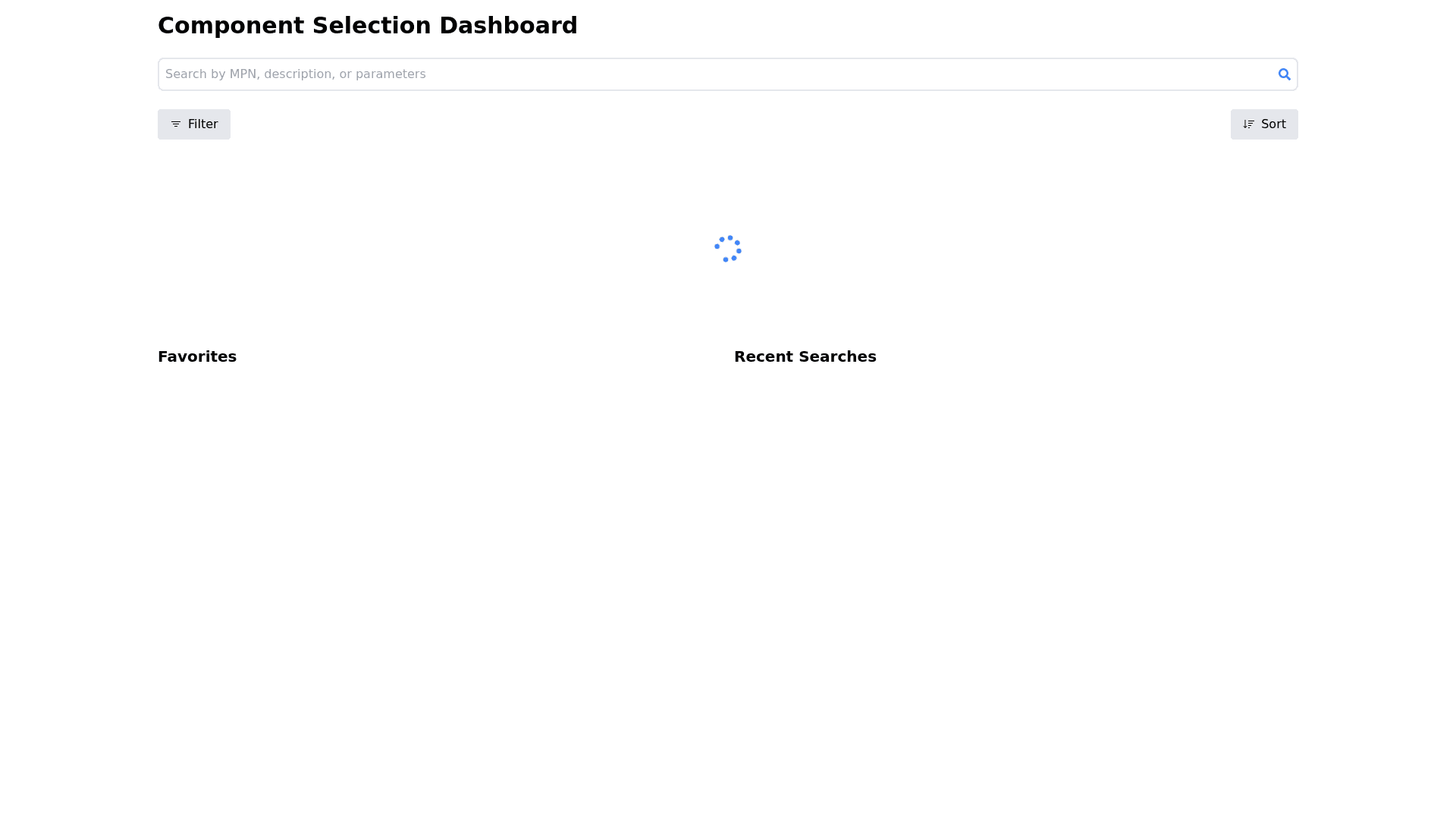Component Selection Dashboard - Copy this React, Tailwind Component to your project
Objective: Design an intuitive and hybrid component selection tool dashboard that combines the best features of Digikey, Octopart, and Mouser while offering a unique and user friendly UI/UX experience. Key Features and Functionalities: Search Bar: Parametric Search: Users should be able to search for components based on specific parameters such as resistance, capacitance, voltage, etc. MPN Search: Provide a search field for entering Manufacturer Part Numbers (MPNs). Description Search: Allow users to search by component descriptions or keywords. Filter and Sorting Options: Dynamic Filters: Filters for categories, subcategories, family, and specifications should be easily accessible and dynamic. Sorting: Enable sorting by various criteria such as price, popularity, newest, and other relevant metrics. Component Display Table: Columns: Include columns for MPN, Description, Manufacturer, Category, Price, and Availability. Pagination and Infinite Scroll: Offer both pagination and infinite scrolling options for navigating through large lists of components. Loading Spinner: Show a loading spinner or progress bar while data is being fetched. Comparison Tool: Comparison View: Allow users to select multiple components and compare their specifications side by side. Comparison Features: Include features to add or remove specifications and to highlight differences between components. Favorites and Recent Searches: Favorites: Provide a section for users to save and easily access their favorite components. Recent Searches: Show a history of recent searches for quick access. BOM Builder Integration: Add to BOM: Allow users to add selected components to a Bill of Materials (BOM) with an option to enter additional details. BOM Management: Include functionality to view, edit, and delete BOMs. Detailed Component View: Datasheet Access: Include a link to the datasheet or detailed specification sheet for each component. Pricing and Availability: Display pricing tiers and availability from different suppliers. User Interface and Experience: Intuitive Design: Ensure that the UI is clean, modern, and intuitive with a focus on usability. Responsive Design: The dashboard should be fully responsive and work seamlessly on different devices and screen sizes. Interactive Elements: Include interactive elements such as tooltips, modals, and dropdowns to enhance user interaction. Additional Features: Notifications: Provide notifications for price changes, availability updates, or other relevant information. Integration with External APIs: Implement API integrations for real time data fetching from suppliers. Design Aesthetics: Color Scheme: Use a professional and clean color scheme that aligns with modern tech and electronics design. Typography: Choose legible and contemporary fonts for clarity and readability. Icons and Graphics: Incorporate intuitive icons and graphics to enhance the visual appeal and functionality of the dashboard.
